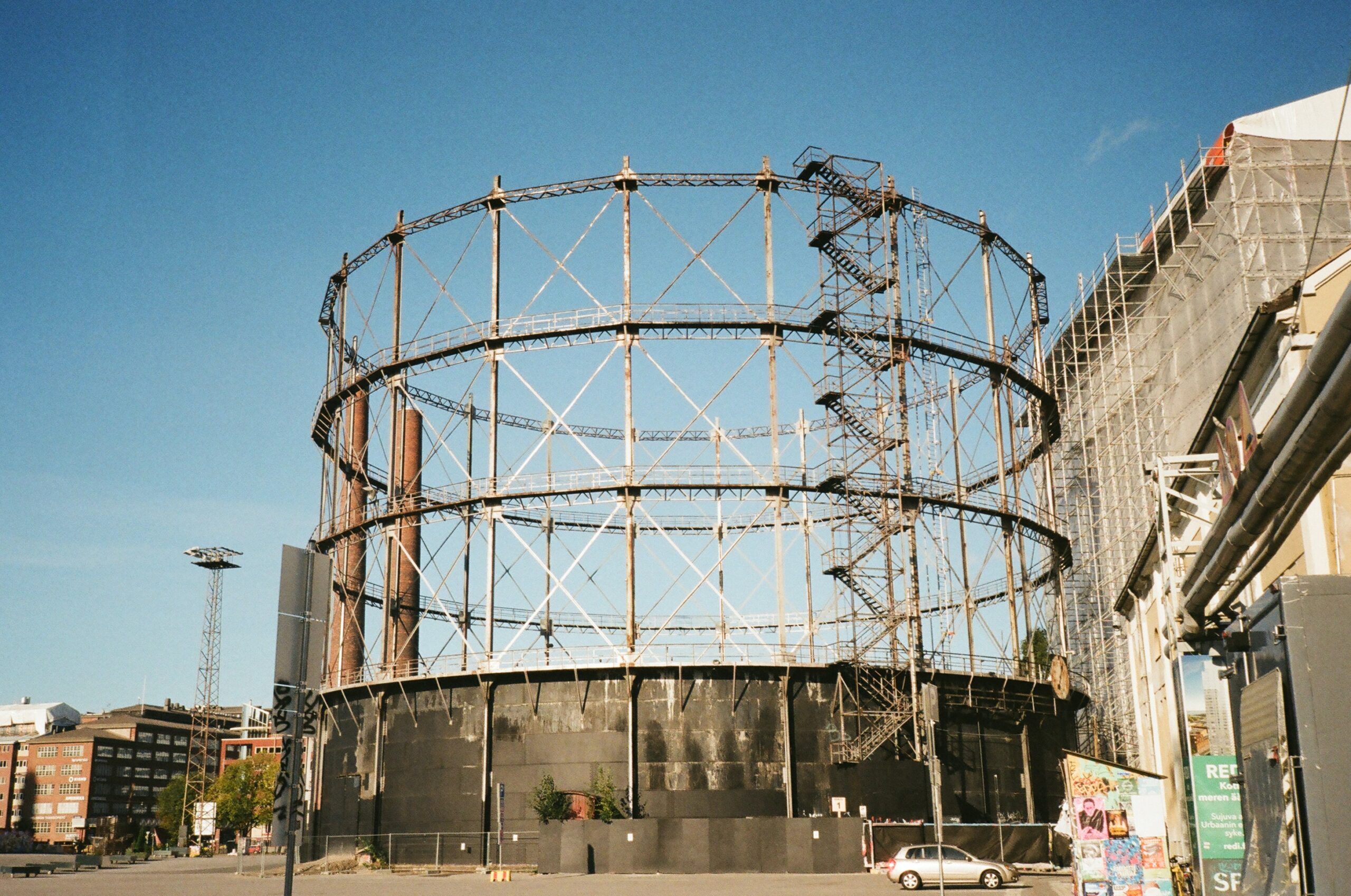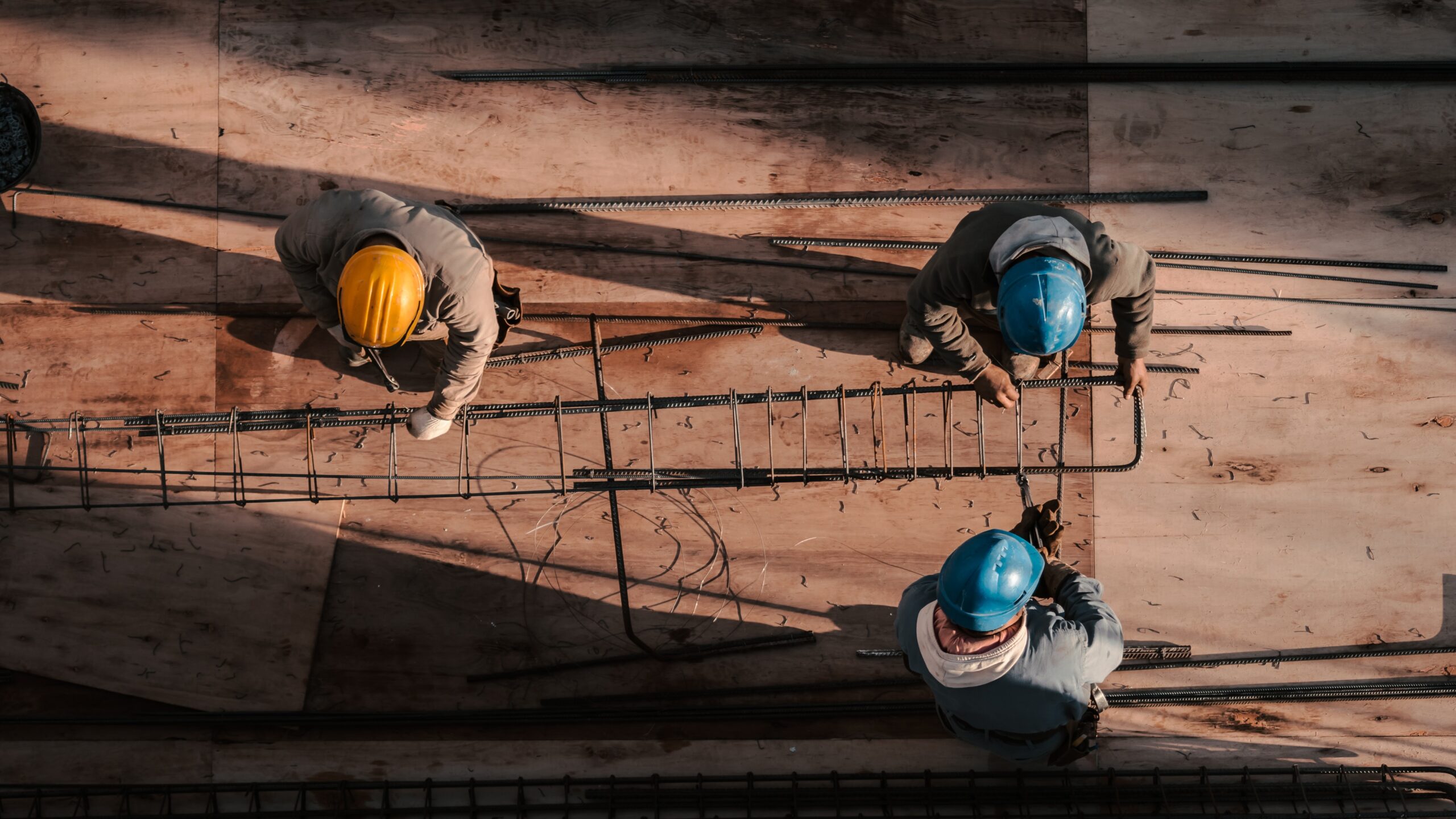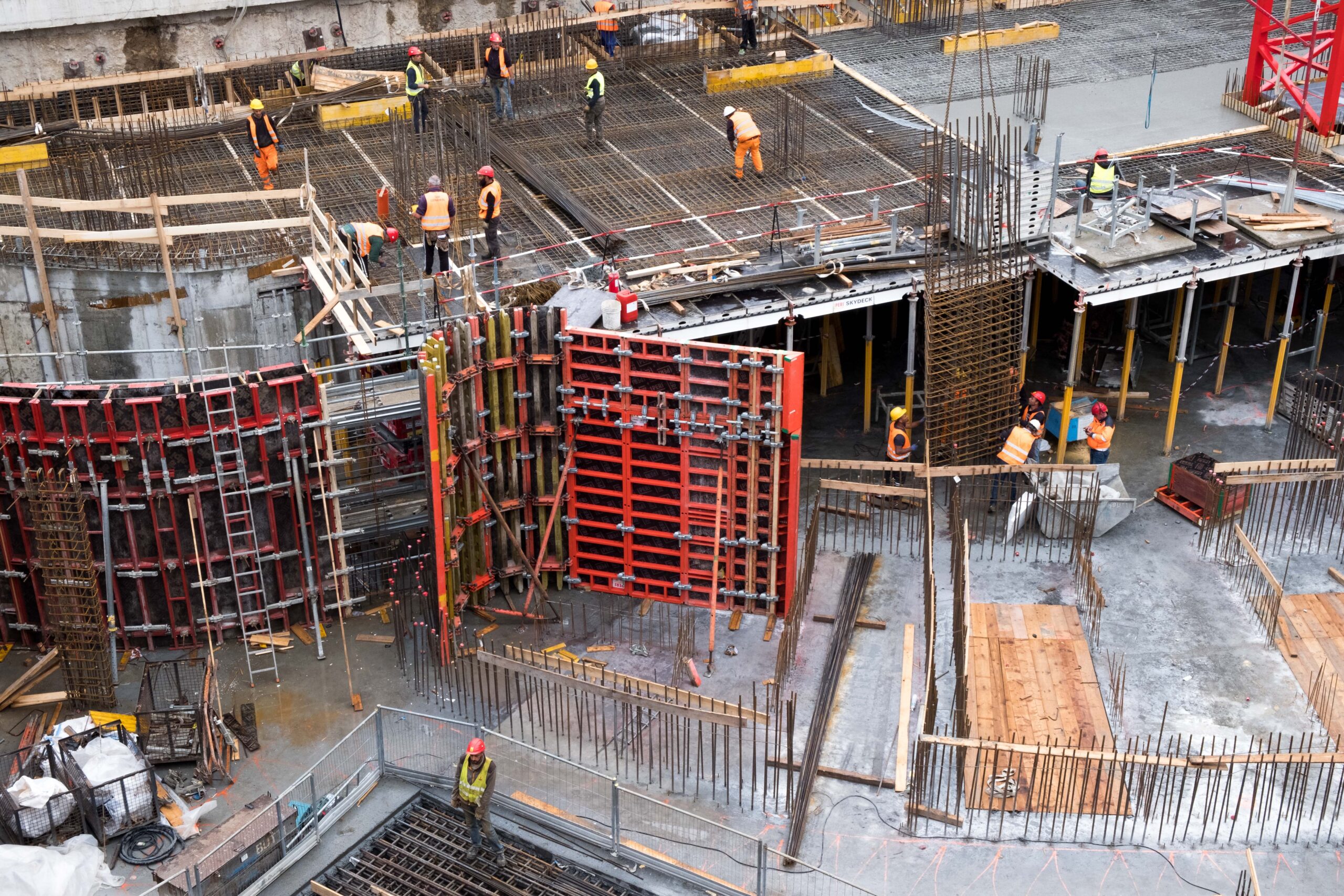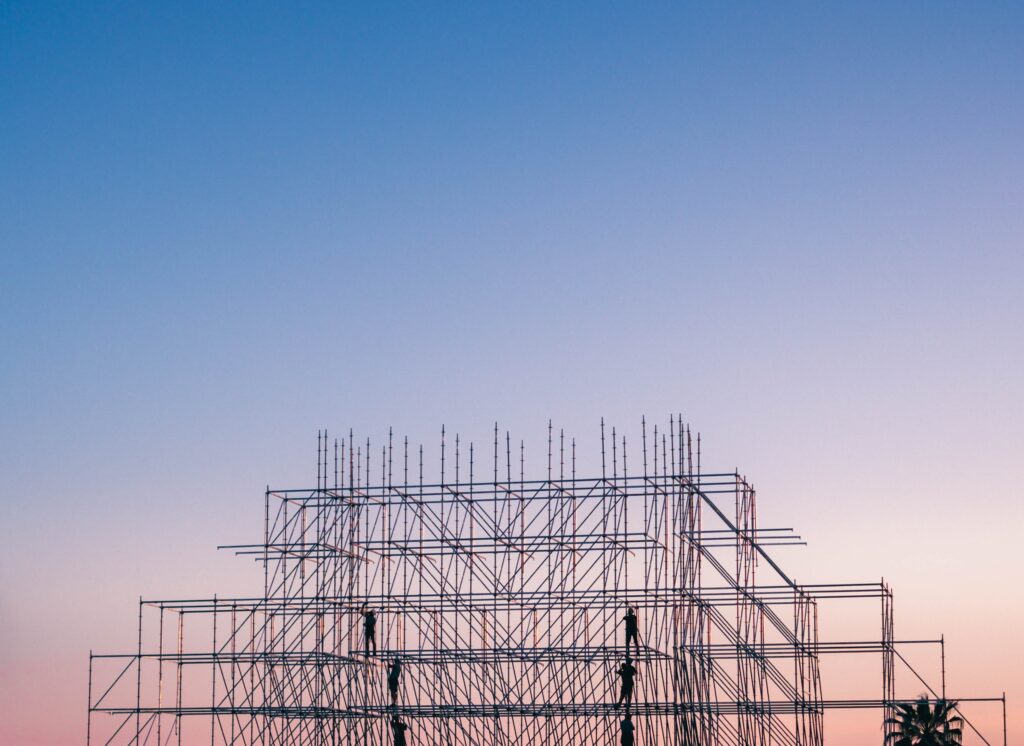Exclusive Neuroject Article: Construction companies are facing a number of challenges due to the growing context of globalization, which has led to an urgent need to enhance and improve their performances to overcome the pressure of competitiveness in the international market. The conventional approach to construction places emphasis on merely what the client wants to be built and what is detailed in the plans, whereas lean construction has come to the conclusion that the client’s values stretch deeper than that; it’s not just about what to build but also why.
A different level of trust must be developed very early in the planning stages of a project in order to truly comprehend value from the perspective of the client. The fundamental principles of lean construction revolve around maximizing value and reducing waste. It depends on the idea of using different methods to cut down on waste of time, effort, and money while providing higher-quality outcomes. So let’s take a look at Traditional vs Lean Construction.
What are the Characteristics of Traditional Construction?
To understand the issue of Traditional vs Lean Construction, it is better to first review the characteristics of the traditional approach. The word “traditional” is frequently used when referring to linear construction techniques in which a systematic, step-by-step approach to developing a structure is taken. This building process consists of several steps, each of which must be finished before the next can start. For the purpose of ensuring that the structure is erected accurately and without any faults.
When compared to more modern construction techniques, conventional construction is the most familiar and hence the safest choice.
In traditional construction, companies concentrate their efforts and resources primarily on transactions and contracts in conventional building projects. Relationships therefore stay transactional, with contracts ensuring the project’s success. In a classic organizational structure, all employees follow a chain of command as authority moves up through the organization.
A project manager is in charge of the hierarchical, categorized approach that defines traditional construction.
 The architect designs the building first and then gives it to the construction managers in order that they could compose a plan for implementation. The drawback of this strategy is that it frequently results in a lack of transparency and coordination between the numerous teams working on the project, which causes inefficiencies, errors, and delays.
The architect designs the building first and then gives it to the construction managers in order that they could compose a plan for implementation. The drawback of this strategy is that it frequently results in a lack of transparency and coordination between the numerous teams working on the project, which causes inefficiencies, errors, and delays.
Traditional construction is characterized financially by cost-plus contracts, which can turn out more expensive than other techniques. This is a result of the project manager’s substantial management and oversight duties, which frequently include on-site monitoring, team coordination, and quality control.
While efficiency, safety, and quality standards are prioritized in traditional construction, it might be lacking in the adaptability needed to react rapidly to unforeseen occurrences or shifts in project scope.
Advantages and Disadvantages of Traditional Construction
The continuation of the review of Traditional vs Lean Construction discusses the advantages and disadvantages of the traditional approach. In traditional construction qualified craftsmen build structures on-site. This system, which has been in use for millennia, offers both advantages and disadvantages.
The fact that traditional building is highly flexible is one of its most important advantages. With the help of architects and engineers, skilled employees can modify the design and revise the original blueprint. When site circumstances change and plans must be modified to satisfy the needs of customers, therefore this flexibility may be helpful. Traditional building methods are also considered to be strong and long-lasting which will produce long-lasting buildings that just need infrequent maintenance.

However, there are certain drawbacks to conventional construction. The time needed to construct structures using this method of construction is one of the biggest limitations.
On-site construction takes a significant amount of time and work. Depending on the size and level of complexity of the structure, a project may take months or even years to finish. Due to the method’s extensive labor, equipment, and material requirements, it is extremely expensive. Some customers might consider the cost to be expensive, which may motivate them to look at alternative solutions
The conventional method of building is also susceptible to environmental factors. The speed of the building can be greatly slowed down and delayed by the weather. once a project faces time pressure, this vulnerability can lead to significant time and cost losses. The transportation of conventional building materials, including steel, concrete, and bricks, can be resource-intensive and heavy. The expenses of transporting these supplies needed for conventional construction may also increase.
What are the Characteristics of Lean Construction?
Now, in this part of the Traditional vs Lean Construction article, we take a look at the Characteristics of Lean Construction. Lean construction is a way of designing approach aimed at minimizing costs, time, materials, and efforts. It is also described as incorporating lean thinking into the design and construction processes to optimize project delivery that satisfies client requirements and increases constructor productivity in every stage of the construction process.
In order to reach these values and goals there are a few key characteristics that define lean construction.
Collaboration and Team Work: each individual involved in a project is engaged in constant discussions around finding and solving problems rather than promoting personal interests. This strategy encourages participants to collaborate to accomplish mutual goals.
Waste Reduction, which includes anything that does not add any value to the project such as overproduction, waiting, transportation, overprocessing, excess inventory, unnecessary motion, and defects. This way Project teams can operate more productively, cut down on lead times, and save costs by identifying, locating, and removing waste.
Lean Design, means focusing on designing buildings that are efficient to construct, generate less waste, and require fewer supplies. Creating designs that are optimized for construction and can be built in the shortest time frame is the ultimate goal of lean construction approach, which not only saves money but also helps create sustainable structures that have a small environmental footprint.
Prioritizing Client Value. By understanding the needs and expectations of the customer, buildings that deliver the highest possible value can be created by the design team the key to this goal is working closely with the customer during the design phase, incorporating their feedback, and making necessary changes to meet their needs.
Continuous Improvement is what lean construction constantly emphasizes teams are encouraged to create and try fresh methods and concepts. This approach is also known as “kaizen” – a Japanese word meaning “good change.” The goal is to continually improve efficiency, quality, and customer satisfaction.

Advantages
Now, in this part of the Traditional vs Lean Construction article, we will first examine the benefits of the lean construction approach. Lean construction is a desirable alternative for building companies due to its numerous benefits. Here are some of the most significant benefits:
Higher Efficiency: lean construction focuses on time-saving and well-organized processes and reducing waste, resulting in higher efficiency, and reducing overall costs.
Enhanced Quality: at every stage of work delivering high-quality work is essential when using lean construction approaches. With prioritizing quality, errors and rework are minimized and the finished product will most likely meet the client’s expectations.
Increased Client Satisfaction: by engaging with clients throughout the design process Lean Construction guarantees that the end result meets their requirements, leading to increased satisfaction.
Lower Costs: by reducing waste and improving efficiency, lean construction can significantly lower costs.
Improved Safety: in lean construction safety is known as the key component of the construction process. This means that the design and construction process start and end with safety in mind, resulting in improved safety overall.
Sustainable Practices: lean construction encourages sustainable practices including employing waste-free products and eco-friendly materials. This promotes a more sustainable future by lowering the environmental effects of construction.

Disadvantages
At the end of this part of the Traditional vs Lean Construction article, we review the pros and cons of lean construction. While lean construction has numerous advantages, there are also some potential disadvantages to consider:
Complexity: putting lean construction into action can be a challenging process that requires time and energy. It can be necessary for some employees to get some training and adopt new practices and strategies.
Resistance to Change: being used to conventional building techniques some stakeholders may be resistant to the adjustments required for lean construction therefore it might take longer to fully see the benefits of implementing this approach Higher up-front costs Although lean construction may result in long-term cost benefits its possible for a greater need in up front investment. This may be a barrier for smaller companies with constrained resources.
Over Optimization Risk: lean construction emphasizes effectiveness and the elimination of cost and energy which can result in placing an excessive amount of focus on cost reduction and speed of the process and not enough on quality or safety.
Limited Applicability: lean construction can be used for various types of construction projects, but it might not be appropriate for all of them. For instance, lean construction principles may not be advantageous for projects with a high level of customization or those with a limited scope.

Step by Step on How to Adopt Lean Construction
Now that we are well acquainted with the details of Traditional vs Lean Construction, let’s take a look at the steps of Lean Construction. Considerable adjustment in mentality and methods is the main key to adopting lean construction A step-by-step roadmap to implementing lean construction is offered here:
1. Educate and Train your Team
The first and crucial step in adopting lean construction relies on educating and training everyone involved in the constructive process, including managers, designers, engineers, and workers. Needless to say, this training should focus on the core principles of lean construction such as waste elimination, value creation, and continuous improvement.
2. Determine the Value Stream
The next stage is to identify the set of activities necessary to deliver a project to the client which is called the value stream. This step has to cover every stage of the design, purchasing, and building process. Once defining the value stream, it should be examined in order to find opportunities for waste elimination and efficiency enhancement.
3. Eliminate Wastes
Removing waste from the value stream is the third phase. Applying lean concepts like Just-in-Time (JIT) delivery, Kaizen, and Visual Management can help with this. JIT delivery, for instance, may be utilized to guarantee that materials are brought to the building site just as needed, minimizing waste.
4. Standardize the Processes
In order to ensure consistency and excellence the process should be standardized. To achieve this, standard operating procedures (SOPs) must be created and followed by all project participants, covering everything from ordering and delivery of supplies to how the work is scheduled and executed.
5. Implement Pull Planning
The fifth stage is to put Pull Planning into practice. Pull Planning is a collaborative planning procedure that includes all project stakeholders. The project completion date serves as the starting point for this procedure, which works backward to identify the order of tasks required to reach that deadline. Pull Planning enhances team communication, promotes stronger collaboration, and decreases delays. By following these five steps, construction teams can implement lean principles and practices and create a culture of continuous improvement.
Conclusion
Building projects can be approached differently using lean construction versus conventional construction. Design, bidding, building, and inspection are examples of common stages in traditional construction that entail a linear, sequential process. This strategy frequently leads to a labor-intensive, expensive, and wasteful procedure.
Lean construction, on the other hand, aims to reduce waste and maximize efficiency across the whole building process. It is a more integrated and collaborative approach. Designers, builders, and customers are all included in the continual improvement process of lean construction, which attempts to maximize value and reduce waste.
Lean construction accomplishes this using a variety of techniques, including cutting down on material waste, streamlining the supply chain, utilizing modular building techniques, and enhancing transparency by encouraging open dialogue and cooperation among all stakeholders.
Overall, lean construction is a more efficient and effective approach to construction that focuses on creating value while reducing waste, while traditional construction is a more traditional, linear approach that may result in inefficiencies and higher costs.
Suggested articles related to the topic of Traditional vs Lean Construction:
Top 7 Sustainable Architecture Projects
important construction technology in 2024
Resources:
blog.bricksapp.io | kainexus.com
For the images: pexels



